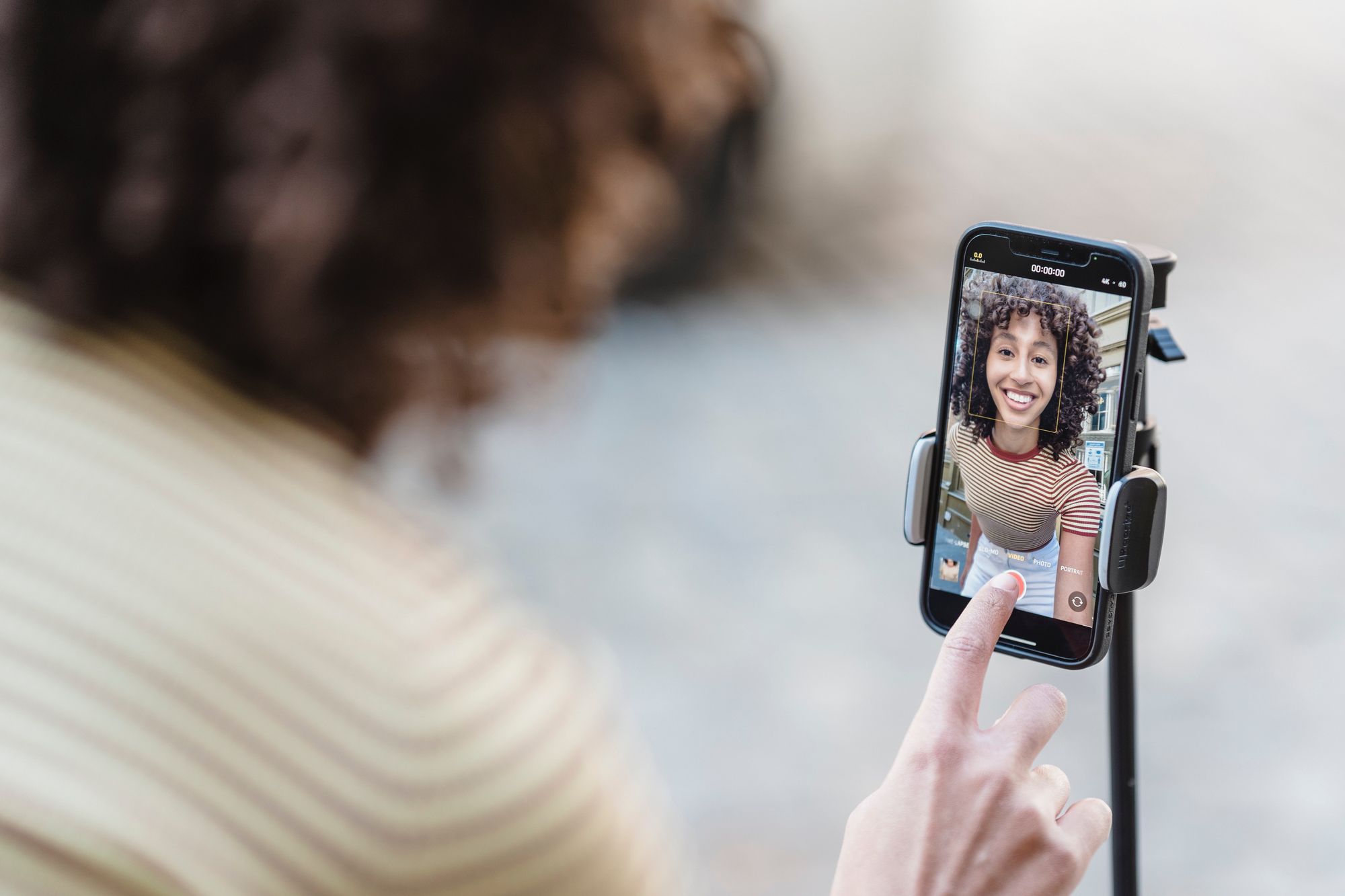6 direct-to-consumer brand inspirations to help you design your own video strategy.

One of the best ways to reach your target audience is through video. If you run an online store, you're leaving money on the table by not producing engaging product videos for your customers to watch.
The following are some tips from nine thriving direct-to-consumer brands to help you get started on your own video marketing campaign.
1. Using video to promote online sales
In 2021, online shopping reportedly made up nearly 19 percent of all retail sales worldwide, according to Statista. By 2026, this share is expected to approach 25% of total retail sales worldwide.
Watching a product video is like physically inspecting the item before buying it, but in the digital world. E-commerce companies recognize the value of including videos of their wares on their websites in order to give customers more information before, during, and after the purchase process.
Example: the popular direct-to-consumer (DTC) brand Allbirds, which sells casual footwear such as flats and shoes made from natural materials. Allbirds' strategy relies heavily on the inclusion of product videos on product pages so that customers can get a feel for the product before buying online.
2. How-to videos
Renderforest found that 93% of Millennials watch how-to videos on YouTube. As soon as they have a question, they pull out their phones and type the two magic words: "how-to." Wyzowl reports that 96% of consumers have watched an explainer video to gain a better understanding of a service or product.
How-to videos can be a great way to help customers understand how to use and get the most out of your product, particularly if you're selling a more complex product that requires some sort of instructions for use.
Doe lashes, a direct-to-consumer (DTC) brand that sells handcrafted silk lashes, uses how-to videos as a central part of its marketing strategy because the product has a specific application process. Video tutorials on basic lash application, caring for your lashes, and customizing your lashes for different eye shapes are all available to customers.
3. Storytelling videos
Because there is so much video online now, it's challenging for brands to get noticed. Daily, about 3.7 million videos (across all of YouTube) are added. Customers' expectations for video content, particularly from brands, have increased as a result of the massive volume of videos being uploaded every day. This is where the use of narrative videos comes in.
Telling a story through video marketing is an excellent strategy for attracting and retaining an audience. Storytelling videos can be the best format to spread the word about a brand's origin story, future plans, or core values to a wide audience.
For Instance, Take Beardbrand
Beardbrand, a grooming company, is one of many brands that uses video to tell stories to its customers. A key component of the Direct-to-Consumer brand's content creation strategy is the use of video. Beardbrand, which has almost two million subscribers on its YouTube channel, regularly posts videos that share different customer stories and showcase some of the brand's products in action.
4. Video Testimonials
Customers today are constantly on the lookout for third-party reviews and social proof before making a purchase decision. Combined with written reviews, video testimonials can really help convince potential buyers to make a purchase.
Wyzowl found that 77% of people who had viewed a testimonial product video were prompted to make a purchase as a result of the video's presentation of satisfied customers vouching for the quality of the product.
As an example, the products from Ritual. Ritual are a line of natural cosmetics and homewares made with only the finest ingredients. Customers are naturally wary of health-related products, so the company uses video testimonials to demonstrate satisfied users' experiences with the product and win over skeptical shoppers. By showcasing actual customers using Ritual's products, prospective buyers are able to put themselves in the shoes of the target audience and gain a first-hand understanding of the product's value.
5. Video Quizzes
With the decline of third-party cookies, e-commerce companies have come to appreciate the value of their own customer information. As a result, many e-commerce companies are turning to online quizzes as a means of gathering customer information and, in turn, tailoring the shopping experience for individual customers.
In order to connect with their audience and keep them interested while also learning about their preferences, e-commerce brands can use video quizzes.
For Instance, Korean Skincare
Korean skincare is one of the many brands that uses online quizzes to advise and guide customers through a basic skincare routine. Customers can get their questions answered and receive tailored suggestions by taking a brief quiz that will ultimately aid them in making a more educated purchase decision. The video component of this format, in contrast to traditional quizzes, adds a human element, making the experience more engaging and trustworthy.
6. Unboxing Videos
The term "unboxing video" refers to a video in which a product is opened for the first time on camera.
DTC brands use these videos to create excitement, generate FOMO, and motivate customers to buy the product because of the importance of first impressions and the hype of the overall unboxing experience.
The Case of Henrie
Unboxing videos are used to promote the premium adjustable pillow brand Henrie. The psychology behind "unboxing" videos plays on our natural inclination to be giddy over something brand spanking new. You can learn a lot about the product and what it's like to use it from these unboxing videos.
7. Shoppeable Videos
A shoppable video is a type of interactive video in which viewers can find and buy products directly from within the video itself. Today's consumers want answers to their questions at the touch of a button and are accustomed to getting what they want right away.
Forty percent of marketers currently use shoppable videos, per data from the IAB. Shoppable videos offer interactive and engaging content for consumers while also reducing friction for ecommerce brands. To put it simply, everyone benefits.
Cancha bags, for example, allow customers to personalize their sports and travel bags with a variety of add-ons. The company promotes product awareness and sales with shoppable videos so that viewers can easily add items to their shopping carts. In order to make an informed purchase decision, today's online shoppers demand a streamlined, multimedia-rich shopping experience. Combines the low-effort of watching a video with the immediate satisfaction of making a purchase.
If you would like to kickstart your video marketing strategy, consider using Playback - the ultimate interactive video toolkit that helps you create all kinds of video experiences onsite for your customers easily. Checkout this article to learn more on how brands are using Playback to deliver a personalized brand experience to their customers.

